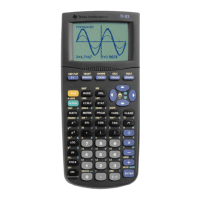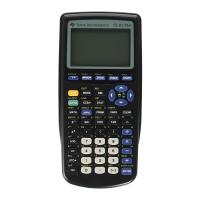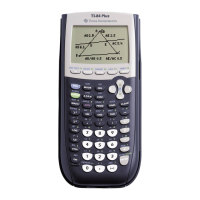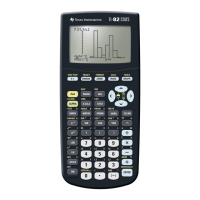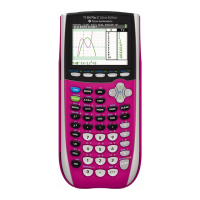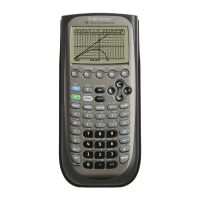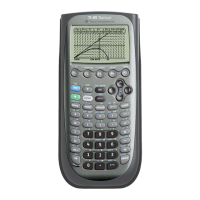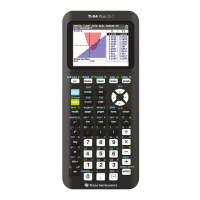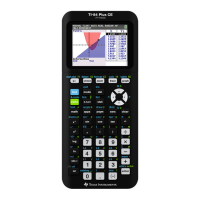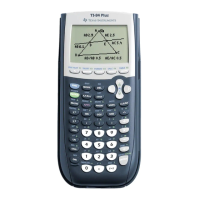OneVar xList[[,freqList][,catList][,incList]]
Calculate one-variable statistics and update
system statistics variables. All lists must have
equal dimension except incList. The first three
arguments must be variable names of c1 - c99.
incList need not be a variable name and cannot
be c1 - c99.
or
exp1 or exp2
list1 or list2
matrix 1 or matrix 2
Return true or false or a simplifed form.
integer1 and integer2
Bit-by-bit 32-bit integer logical or. Arguments
larger than 32-bit signed values are reduced
with symmetric modulo operation. Mode must
be Auto or Exact.
ord()
(string), (list)
Return numeric code of the first character in
string. Return list of numeric codes of first
characters of strings in list.
Output row,column,exprOrString
Display expression or string exprOrString at text
coordinates row, column. exprOrString can
include conversion operations such as ▶DD.
exprOrString is pretty-printed if Pretty Print is
on.
P▶
▶▶
▶Rx()
(rExpr, Expr), (rList, List), (rMatrix, Matrix)
✕✕ ✕
Return the x-coordinate of the (r, ) pair. is
✕✕
interpreted in degrees or radians according to
the current angle mode. Use ° or to over-ride
the current mode setting.
P▶
▶▶
▶Ry()
(rExpr, Expr), (rList, List), (rMatrix, Matrix)
✕✕ ✕
Return the y-coordinate of the (r, ) pair. is
✕✕
interpreted in degrees or radians according to
the current angle mode. Use ° or to over-ride
the current mode setting.
part(expr[,n])
Extract subexpressions of expression expr. n is
a non-negative integer.
(expr)
Simplify expr and return the number of top-level
arguments or operands. Return 0 if expr is a
number, variable or symbolic constant.
(expr,0)
Simplify expr and return a string which contains
the top-level function name or operator. Return
string(expr) if expr is a number, variable or
symbolic constant.
(expr,n)
Simplify expr and return the nth argument or
operand, where n is greater than zero and less
than or equal to the number of operands
returned by part(expr). Otherwise return an
error.
PassErr
Pass an error to the next level. Typically used in
an Else clause (in place of ClrErr), when error
handling is not yet determined.
Pause [expr]
Suspend program execution until [ENTER] is
pressed. If included, expr is displayed on the
Program I/O screen. If expr does not fit on the
screen, the cursor pad scrolls the display. expr
can include conversion operation suffixes such
as ▶DD.
PlotsOff [1] [,2] [,3] ... [,9]
Turn all plots off with no arguments, or turn the
specified plots off. Only affects the current
graph in 2-graph mode.
PlotsOn [1] [,2] [,3] ... [,9]
Turn all plots on with no arguments, or turn the
specified plots on. Only affects the current
graph in 2-graph mode.
▶
▶▶
▶Polar
vector ▶Polar
Display vector in polar form [r∠θ]. vector must
be a row or column vector of dimension 2. Can
only be used at the end of an entry line, and
does not update ans.
complexValue ▶Polar
Display complexValue in polar form: (r∠θ) in
Degree mode, or re
iθ
in Radian mode.
complexValue can have any complex form, but
re
iθ
causes an error in Degree mode.
15 - 15
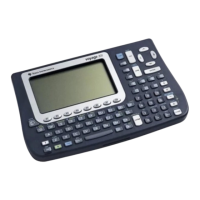
